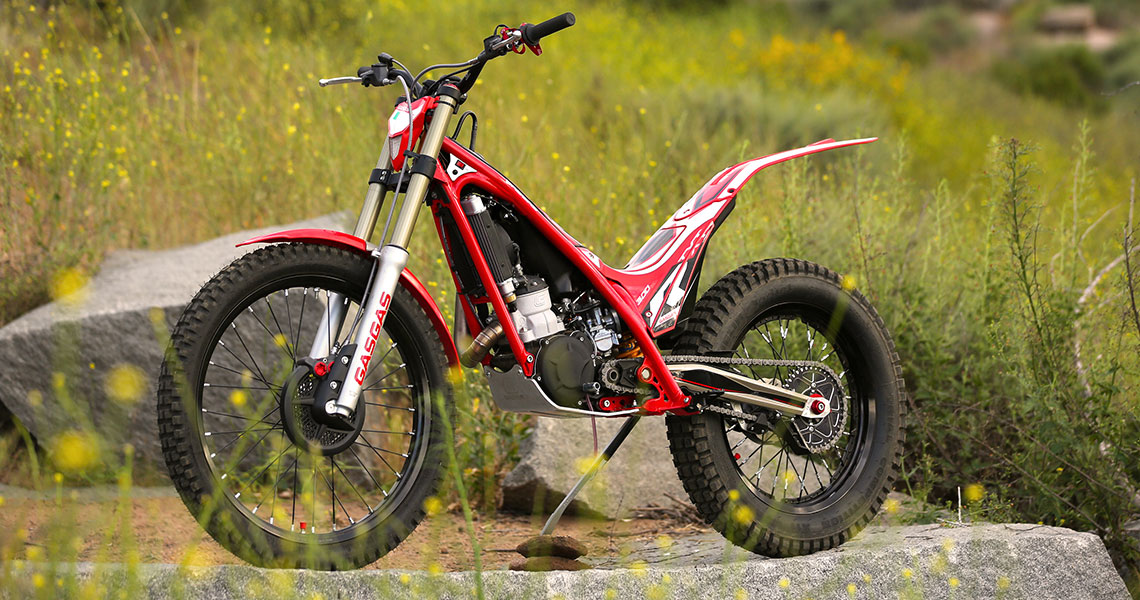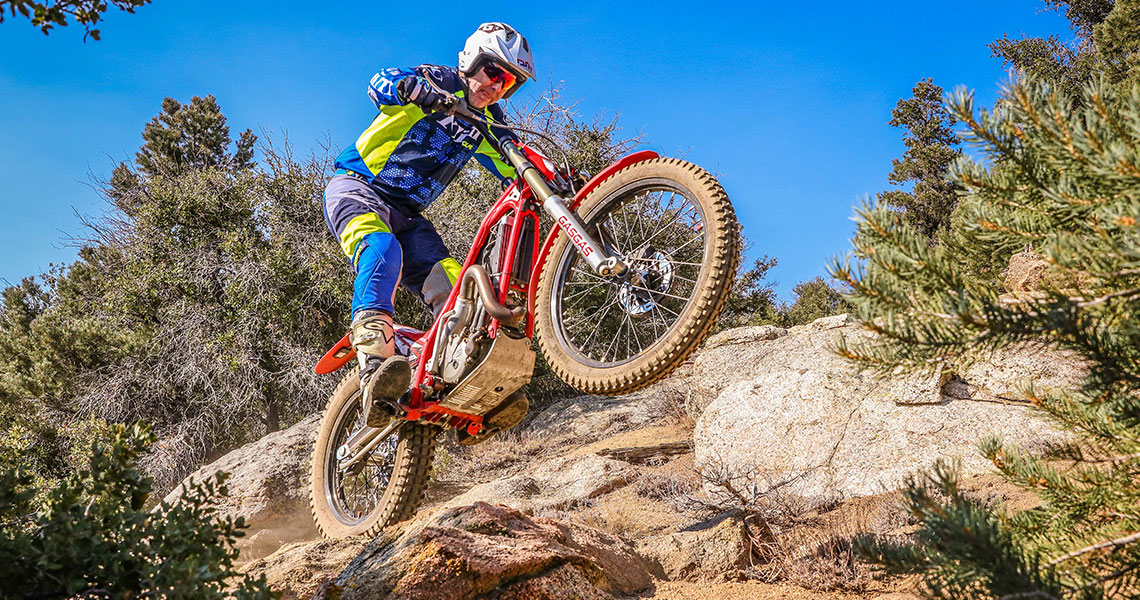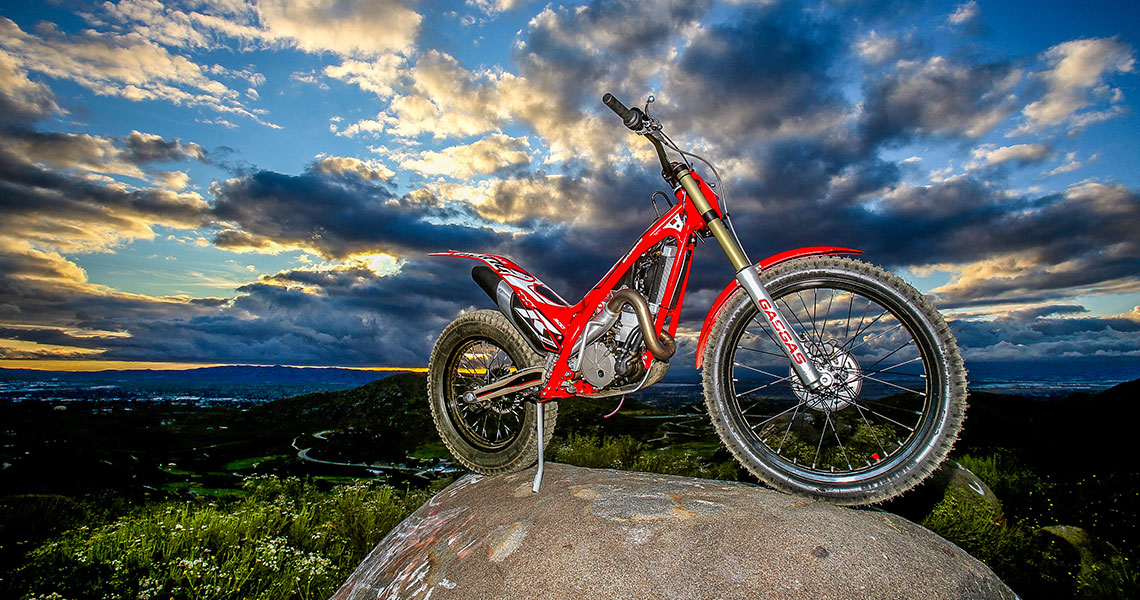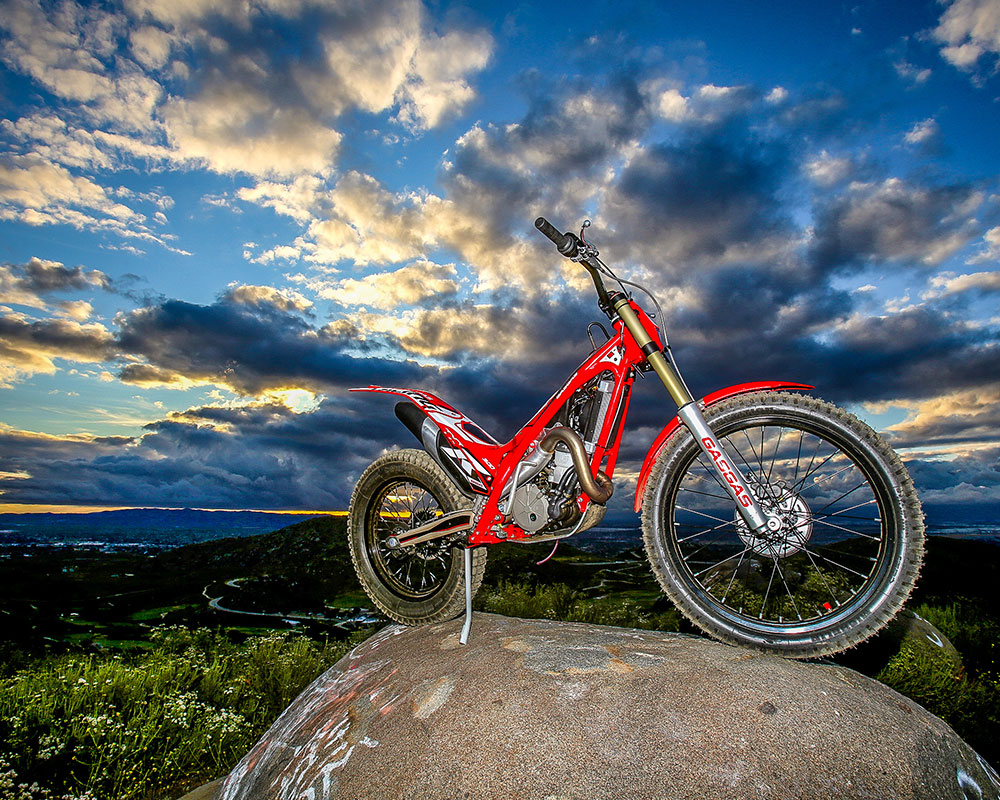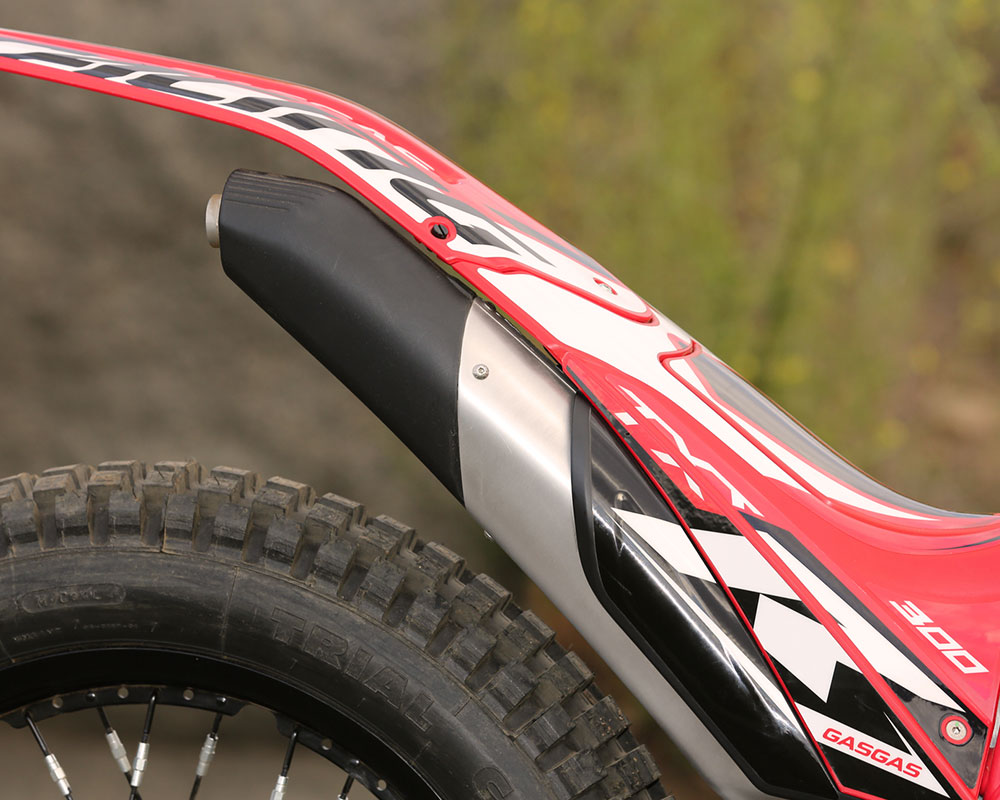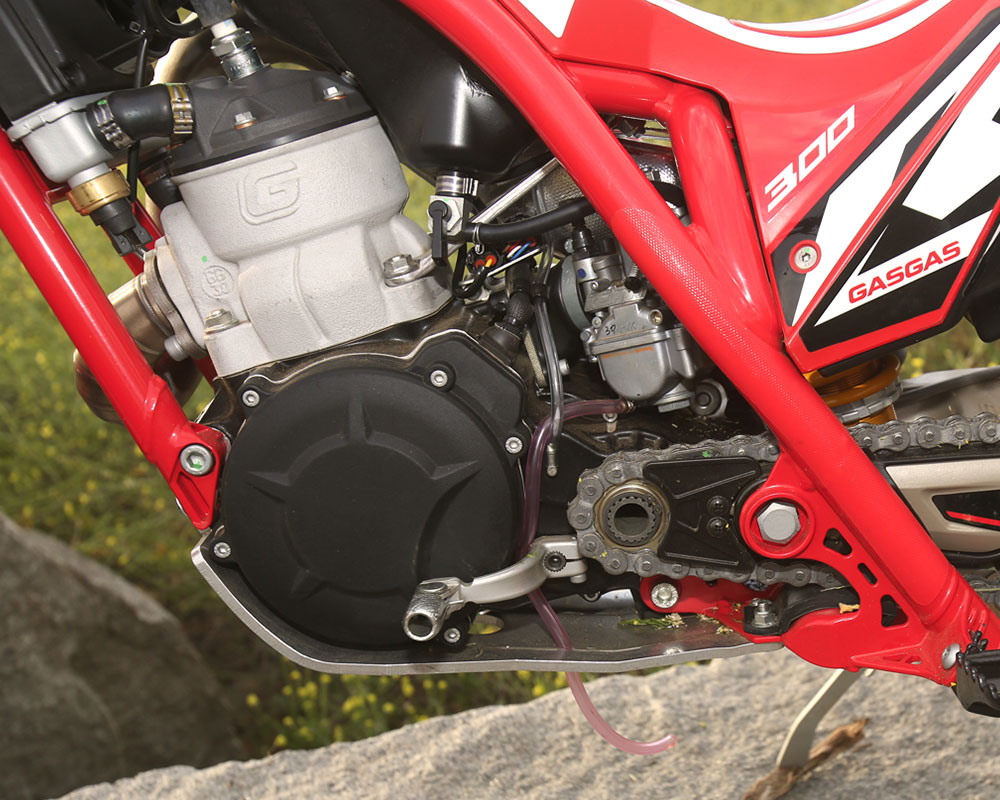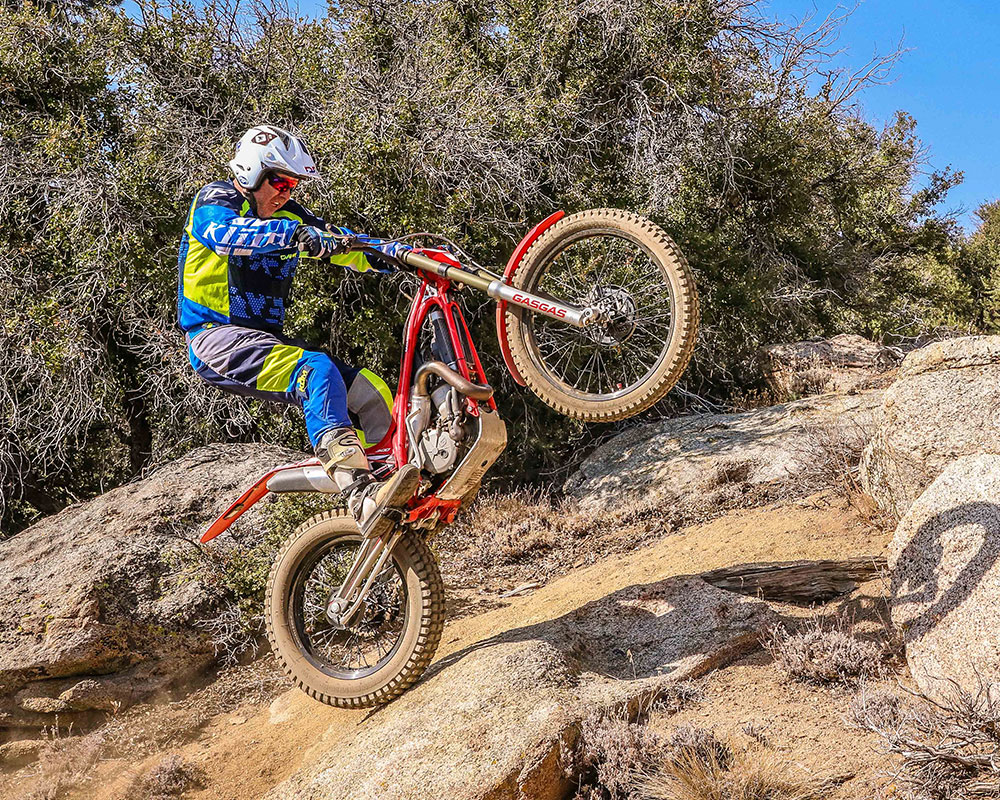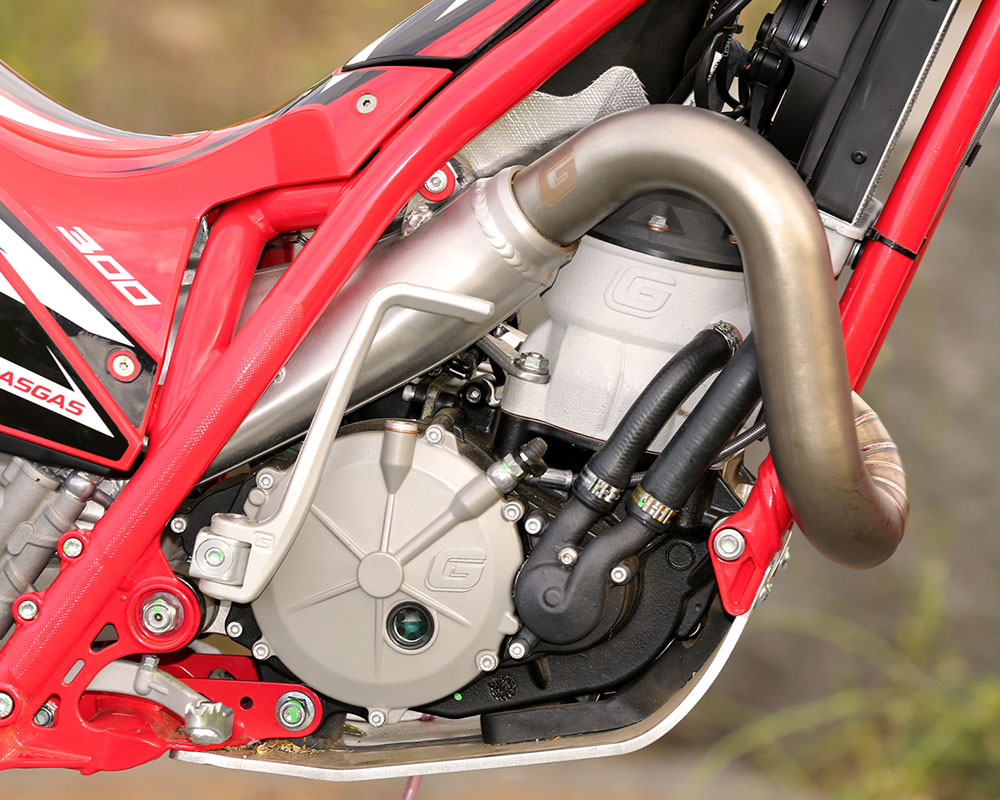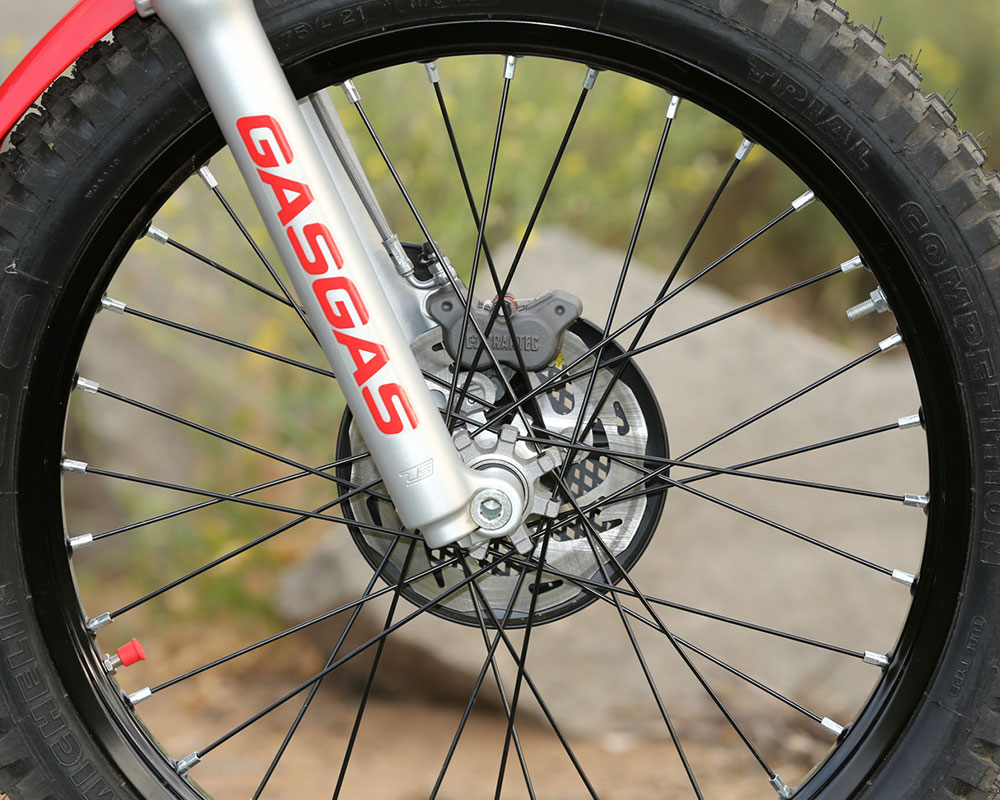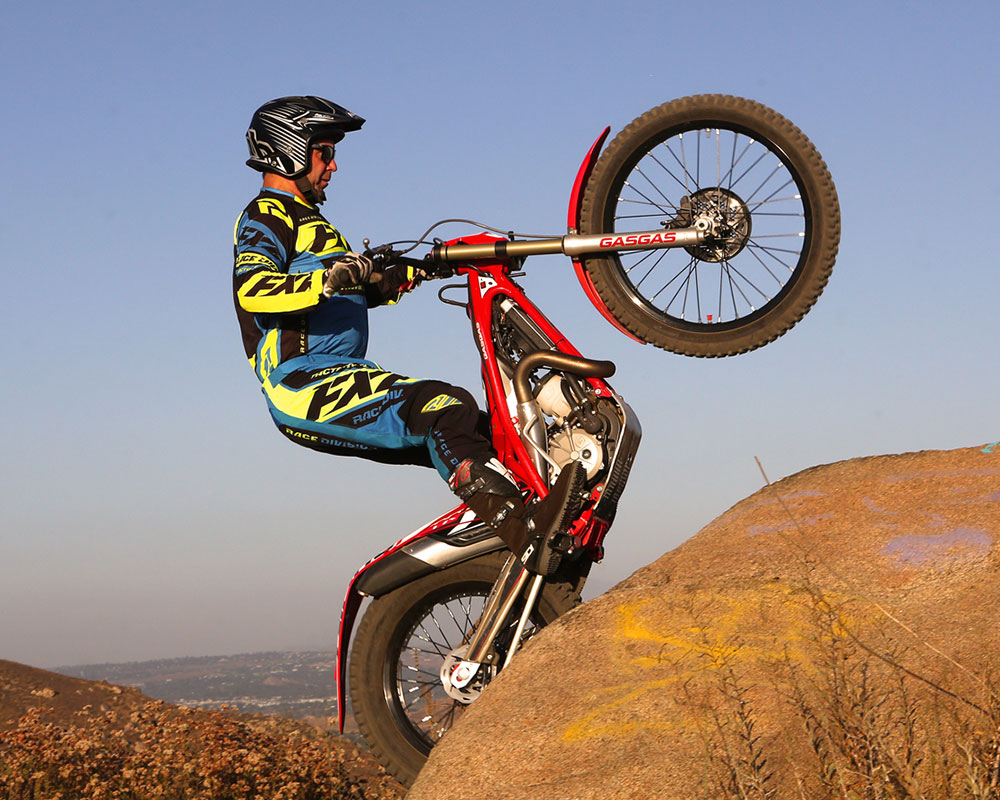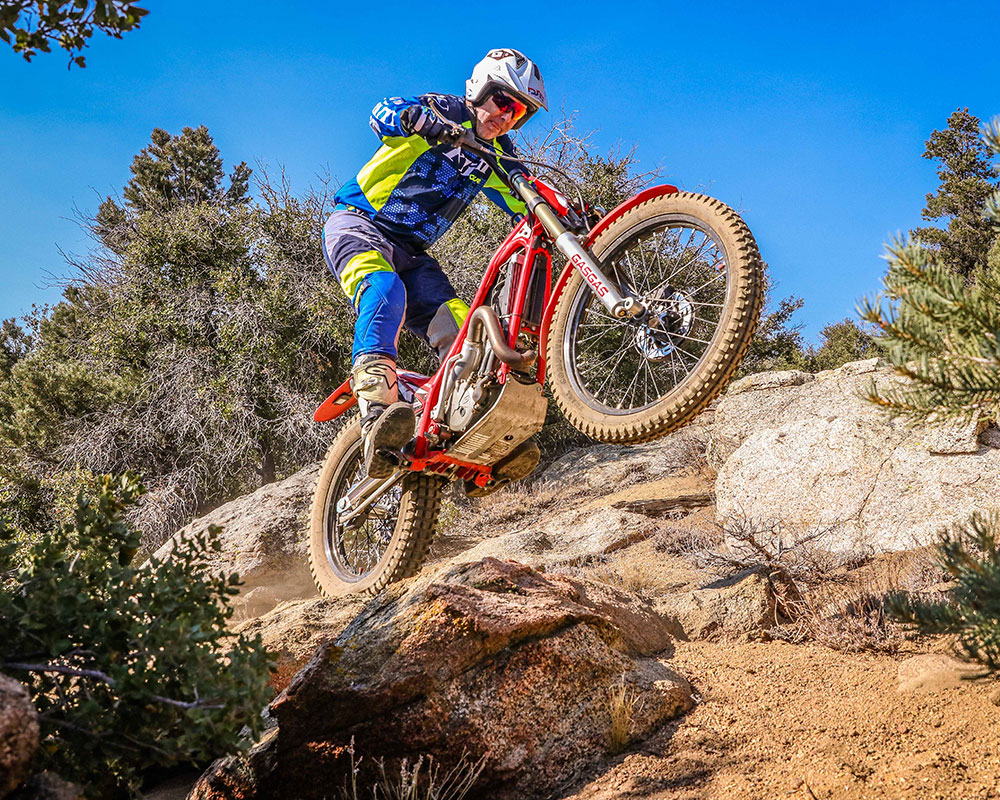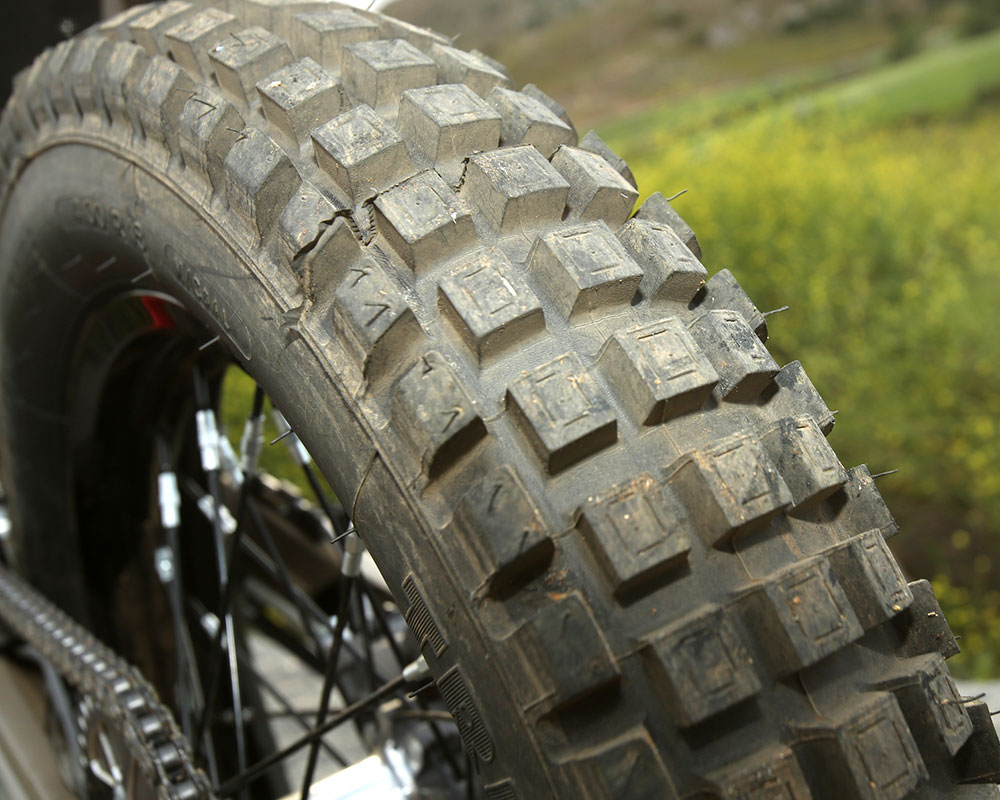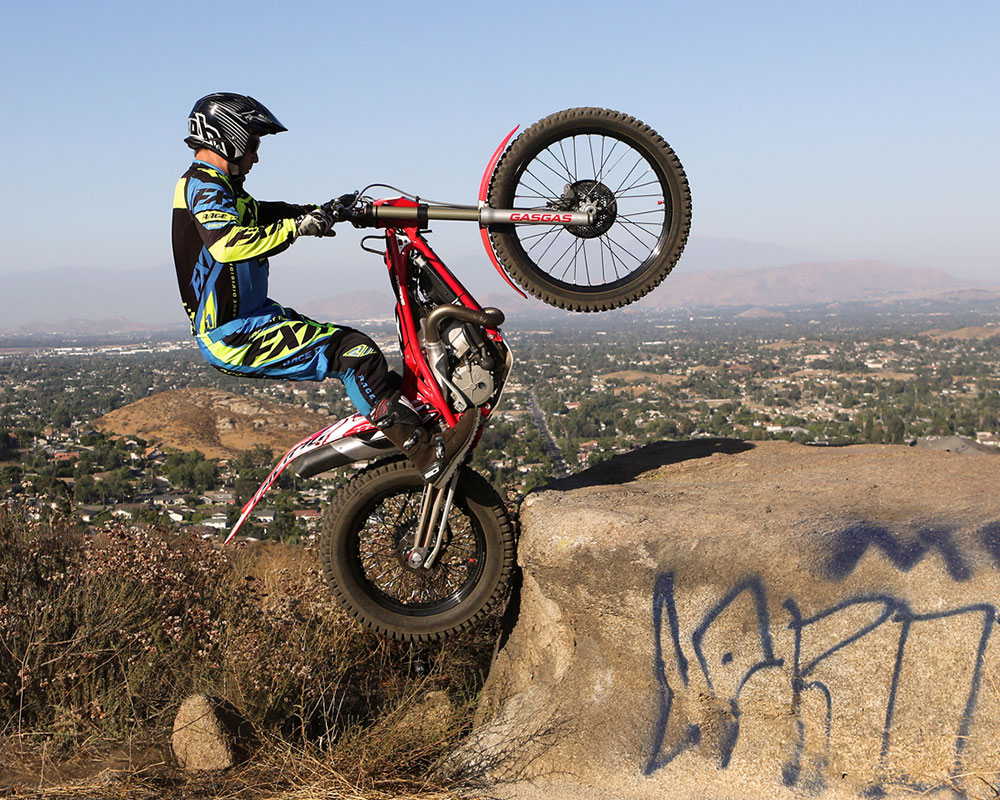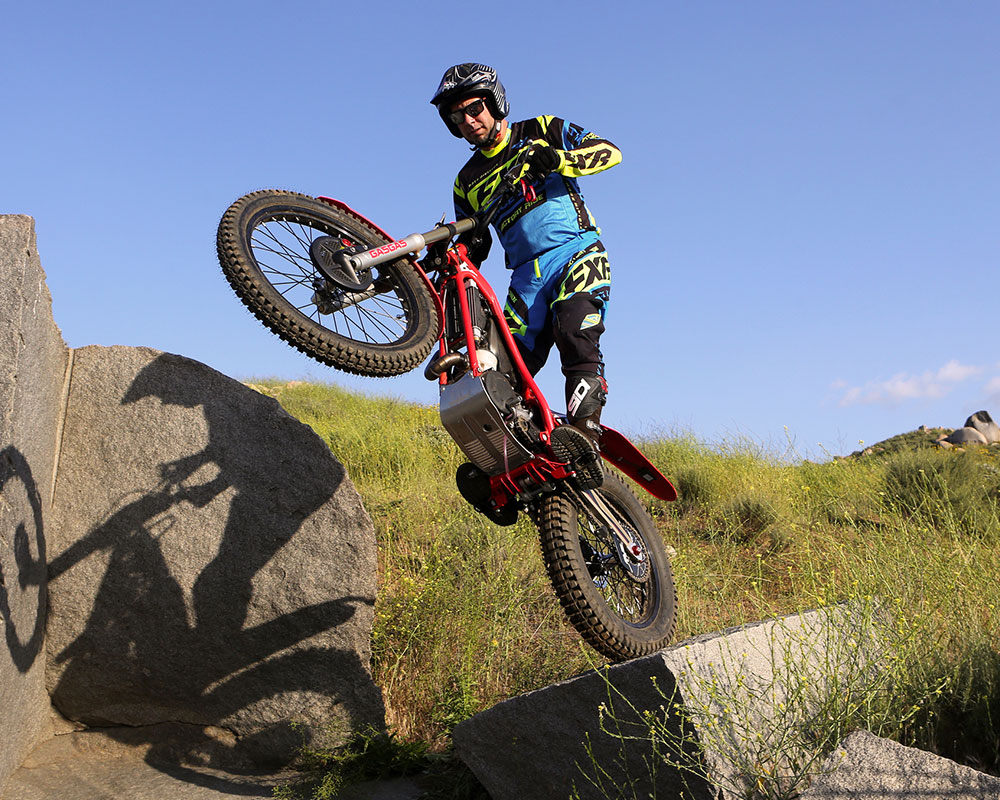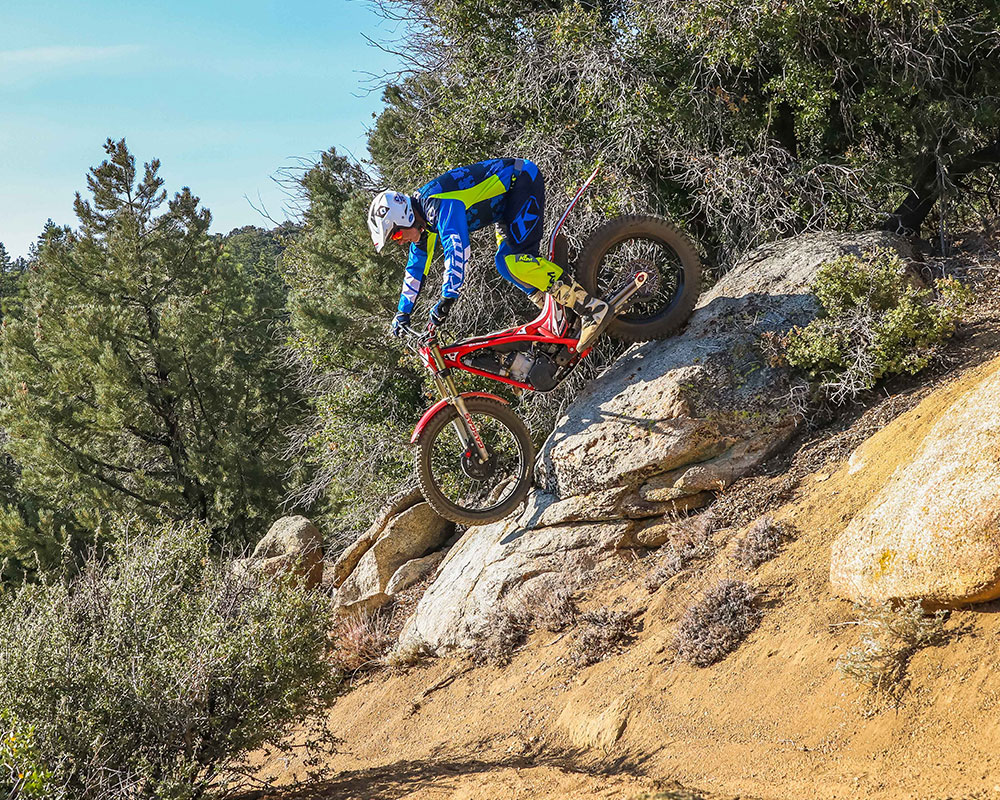2021 GASGAS TXT Racing 300
MSRP: $7,899
- Is there even a motorcycle under me?
- Pro-level performance that a novice can learn from.
- Has the power of KTM parts and distribution.
- Hard to start.
- High performance can be intimidating.
- Where is the seat?
Introduction
Trials riding has been around since the day man began balancing on motorcycles. GASGAS was founded in 1985, with a primary focus in the trials arena, to which they succeeded in. Similar to other Spanish motorcycle brands, the marquee brand fell on tough financial issues multiple times with various owners over the course of its life. In 2019, PIERER Mobility Group (part of KTM) absorbed GASGAS with intentions on gaining their trials bike technology while maintaining production in Spain. However, long lead times for production meant we’d see one final pre-PMG developed trials bike from the folks at GASGAS. Enter the 2021 TXT Racing 300. Keep in mind that although GASGAS has released a full model range of dirt bikes for 2021, they will stay committed to the trials range, an area where KTM has not totally reached into until now.
Changes
No changes have been made from the 2020 model.
Power
- Hard to start.
- Easy and light twist of the throttle.
- Expert level, aggressive power.
- Different maps make a difference and can tailor the motor to different riding styles.
The power on a trials bike is an interesting game of displaying a ton of power when needed for huge bursts--then transitioning to be as smooth as warm butter and controllable in all other instances. The motor is confined into a package that must be tiny and light-weight, yet still have torque and flywheel effect that is typically aided by a big and heavy crank. In other words, the biggest of compromise. All of this is achieved on a two-stroke engine with a small 28mm Keihin carburetor, no power valve, and no true expansion chamber.
The first hurdle to overcome is starting the little monster. When cold, the choke is required, followed by a good kick with some technique to get a nice full swing. Remember Top Dead Center? Remember having to roll the throttle on as you kick? With that smooth, controlled push on the kick-start lever, the bike will usually fire right up. Get ¾ of a kick, be too fast, be too slow, or do something funny with the throttle, then you’ll be kicking for a while. When it gets hot, the starting gets easier, though you still have to have the correct technique. Lack that skill and you’ll still be kicking. Starting is the biggest hurdle and our biggest complaint about this bike. However, by standards from not too long ago when e-start was a rarity, this would be totally normal.
The 300cc displacement offers potent power output on a bike weighing only 157 pounds full of fuel. It settles into a nice idle and has robust pick-up and snap. The twist of the trials bike throttle, which feels like a longer pull in the wrist, is light and easy. In comparison to other trials bikes we have ridden, the 300 boasts expert level aggression in that there is more throttle induced snap than most riders need. Even our experienced riders felt it may be a bit excessive the way it responds fast and builds both power and rpm with any throttle input. It takes the rider some time to tone down the wrist turns to compensate. Just don’t mention that to a trials pro who is likely looking for more. We’ve been told the power is easily tamed and tuned with an accessory cylinder head that offers interchangeable squish domes. Additionally, the engine can be prone to stalling as there is not a lot of flywheel inertia to keep it spinning at low RPMs.
Of interest was the two-position map switch for the power delivery. One is cloudy skies, the other sunny. Now we suspect the map was activated when the button was switched in the direction of the symbol, but we’d swear that cloudy/rainy was more aggressive than the sunny position. The cloud setting had more spunk and pick-up right off of idle and seemed to rev cleaner and pull a little better in all but the very top end. If you were really doing some aggressive splatters and popping from a stop, we could see a rider feeling the more aggressive upper part of the sunny position, but most of our riders were not there and preferred the cloudy position for a more aggressive power delivery.
The trick then becomes controlling the monster. This is where the clutch is excellent and the transmission ratios act as a bonus. There is a gear for every level of speed needed for riding sections and goofing off with the range in the higher gears (4th, 5th, 6th) to move you around from section to section or to do some exploring. Fifth and sixth are really overdrive gears and some care must be taken when shifting into them. The pull of the clutch is light and the system that houses the slave cylinder inside of the clutch side cover offers a nice and consistent feel. It handled abuse well and never faded during our sessions. The fan intermittently turns on and off, keeping the engine at the proper operating temperature. We never lost any coolant with our time on the bike.
That fuel tank holds just shy of one gallon (2.3 Liters) and that is generally enough to wear out the most fit of riders. How many miles is that? We have no idea as we never really went anywhere of substance on this bike. It was usually a ride to an area we played at, ride till exhausted, then ride back. We got roughly 3 rides per tank or guessing about 3 hours of ride time. We mixed gas at 100:1 with pump gas and never had any issues.
Suspension
- Adjustable suspension components.
- Adequate suspension for all but highest level trials riders.
- Adjustments make a difference.
The US bikes have an Ohlins shock and TECH Aluminum fork. The shock is adjustable in spring preload and rebound damping while the fork has spring preload and bottoming control adjustment. Our testers never complained about the suspension and for anyone but the higher level trials riders, we feel the bike has all the control through the suspension you’d ever need. There is enough “springiness” to allow hopping and bouncing with just enough damping control that it isn’t too springy. It can be soft when jumped, especially compounded by dirt bike guys not used to the low-pressure tire setting and feeling more “rim” than we are accustomed to.
The adjustments do make some difference, but it isn’t what a dirt guy is accustomed to. This is more apparent in the bottoming control which seemed to control more how you could hop the bike around when used in conjunction with the spring preload to get it right. If you are landing hard from big jumps or hits, you'll want it all the way in.
On our bike we had fork seal issues and they always seemed to weep, if not outright leak. We’ve heard the aluminum sliders are prone to rock damage, even with the protective coating, but we have not scratched ours yet.
Chassis - Handling
- Light, nimble, agile handling.
- Cockpit is that of a traditional trials machine.
- Easy to bounce and hop around.
You don’t really know a light feeling motorcycle until you’ve experienced a trials bike. GASGAS pioneered the jump to ultra-light motorcycles in the early 2000’s, shedding about 15 pounds off the norm, and have been keeping the bikes light ever since. At 157 pounds full of fuel, TXT 300 feels like a feather, but built tough where it needs to be. The layout is spread out and with the handlebars being so far forward and not having much between your legs, a trials bike can seem very awkward. Trials bikes are traditionally thin at the ankles leaving nothing to squeeze with your knees like on a dirt bike. Never mind the complete absence of a seat. So, yes, the only riding position is standing! The swing of the handlebars goes so far before hitting a steering stop, allowing for a very tight turning radius, only if you are balanced and going slow.
These are all traits of a trials machine and designed to be accommodating while performing at the highest level. Not being anywhere near that level, and more like most mortals interested in riding a bike like this, we can say you won’t be held back by the handling. Instead, you’ll just have to get used to it.
In conjunction with the suspension, the TXT is easy to bounce and to use the spring to literally hop the bike around. The steering geometry is aggressive enough to provide stable steering while also allowing steering inputs that will help correct small losses of balance. Think how the wheel contacts the ground when track-standing and how turning back and forth will steady and control the bike. The inertia of the engine helps with balancing but never feels too heavy limiting maneuverability. This makes the bike feel significantly lighter than trials bikes of yesteryear.
There is a lot of thought put into the details on the TXT 300. The skid plate has a ribbed bottom and it works for sticking onto things like logs and rocks. The cam snail-shell adjusters are inbound of the swingarm, protected from dragging on obstacles and getting hung up. The air filter is an allen bolt away. Our plastic resisted damage from tip overs and the plastic pop-in rear fender pins did their job popping out and letting the fender flex and move rather than breaking.
Conclusion
- Fun, exciting way to enjoy two wheels in a limited space/area.
- Great for improving skills.
If you have ever thought about getting a trials bike, now may be a great time. With GASGAS coming into the market with a brand like KTM behind them, stronger than ever before dealer support should be available. Additionally, the brand will definitely see a little more exposure. We’d never say trials riding is the next big thing, and it will never take off like adventure riding, but it is a niche segment that attracts all different types of riders for all different reasons. The biggest appeal for most is the training aspect. Balance and bike control skills transfer over no matter what discipline you participate in. Trials riding can be a ton of fun and also does not need that much space or even difficult terrain to participate in and have a blast. All that’s needed is some flat ground with a few man-made obstacles and a rider can be entertained for hours. To boot, it is a true full body workout which prompts some fitness gains and a feeling of achievement. It has been a few years since we have ridden Beta, Sherco, or Montesa trials bikes so it is difficult to say how this GASGAS stacks up. Saying that, we’d bet it is right there and a competitive machine against any. We suspect choosing a trials bike is more like choosing a flavor of ice cream. There isn’t a bad one!
Recent Product Tests
Leave a Reply
